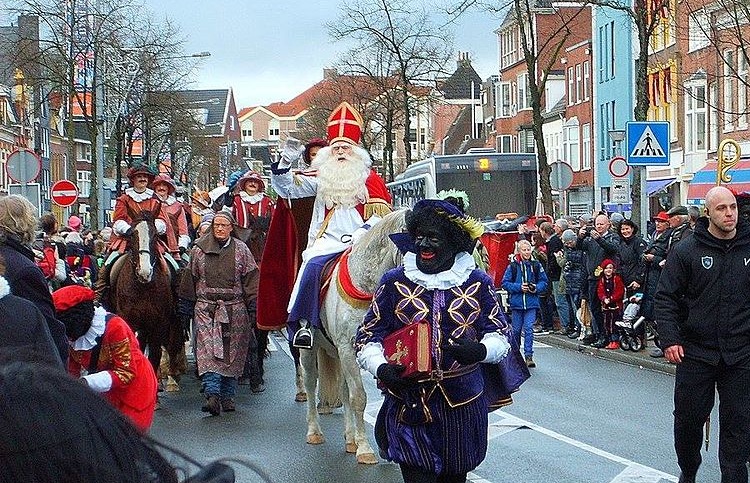Eduardo González
Christmas presents in the Netherlands come neither from the Orient nor from Lapland. They come from Spain and their protagonist is none other than the immediate ancestor of Santa Claus, Saint Nicholas.
According to tradition, St. Nicholas (Sinterklaas in Dutch), a 4th century bishop, appears on the night of December 5-6 loaded with gifts for Dutch children, accompanied by his curious pages, the Zwarte Pieten (Black Peters). The man is dressed in red and white, with a mitre and crozier, as befits a bishop, and many miracles are attributed to him, most of them involving children.
A very striking detail about Sinterklaas is his origin. According to tradition, he has his residence in Spain (some speak of Madrid, others of Alicante) and arrives in the ports of the Netherlands aboard a steamship, after which he rides on a horse named Amerigo, accompanied by his pages, the Pedritos. This tradition, which has been celebrated since 1934 (except for a brief interruption during World War II), is a very special moment for the Dutch and is usually broadcast live on television, as is the case with our Three Wise Men Parade.
The Spanish origin of Sinterklaas is attributed to some very indirect details of his biography. Nicholas was bishop of Mira, in western Anatolia (his homeland in present-day Turkey), until 343. He died on December 6, 345 and was buried in Mira, but after this city was conquered by the troops of the Abbasid caliph of Baghdad in the early 8th century, his body was transferred to Bari. Bari is located in Apulia, in southern Italy and therefore in the so-called Kingdom of the Two Sicilies, which in the 16th century belonged to the Spanish Habsburgs. Probably for that reason, the Dutch associated the name Nicholas with Spain. After the outbreak of the Dutch revolt against Philip II, Calvinists and Lutherans tried to eliminate the feast of St. Nicholas, but its enormous popularity, both among Catholics and Protestants, prevented it.
The feast of St. Nicholas is celebrated on December 6, the date of his death (and Constitution Day in Spain). For that reason, the night of December 5-6 is the night of gifts in the Netherlands, in part of Belgium, in some former Dutch colonies and, to a lesser extent, in some localities of Luxembourg, Austria, Switzerland, Germany, Poland and the Czech Republic.
The tradition crossed the Atlantic Ocean with the emigration of Dutch settlers to America, who kept the feast of St. Nicholas in the colony of New Amsterdam. After its conquest by England in the 17th century, the city was renamed New York and Sinterklaas gradually became Santa Claus. The character later moved to England and France, where he became known as Papa Noel, one of the great international icons of Christmas, popularized above all (but not only) by Coca Cola from the 1930s onwards and who, unlike Sinterklaas, travels with his gifts not from Spain, but from the North Pole.






